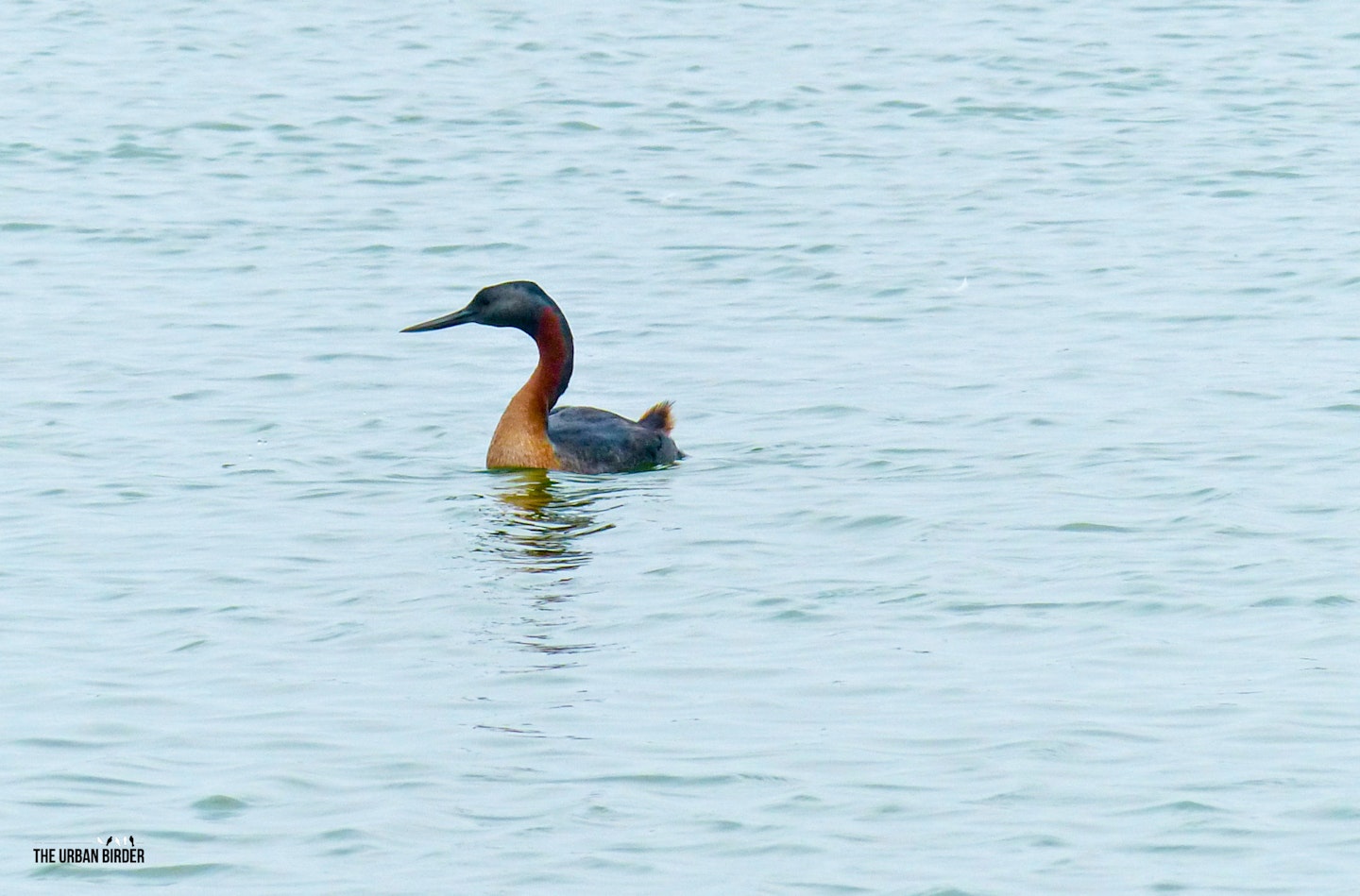Just one look was all it took to appreciate this picture of elegance, writes David Lindo

Which waterbird would you decree as being the most elegant in the world? If you had asked me that question prior to 2013, I would have said Great Crested Grebe, without hesitation. In its breeding garb it is resplendent, with gorgeous head plumes and that ‘Penguin dance’ display that they do; no other waterbird can beat its elegance, surely? Well, in 2013, I went to Peru for the first time. On landing in Lima, I journeyed straight from the plane to the Pantanos de Villa Wildlife Refuge situated within the city limits. There I was treated to flocks of Wilson’s Phalaropes vigorously feeding with a whole bunch of other wader species, masses of larids including Franklin’s and Andean Gulls, plus a totally unexpected and very dark looking American Barn Owl sitting on a sand bank. But then, I locked eyes with a bird across a very crowded wetland scene. It was a Great Grebe and a new species for me. But there was something about this waterbird that kept my gaze fixed upon it. It was just the picture of elegance.
The Great Grebe has the distinction of being the world’s largest grebe, a full 10 inches bigger that our Great Crested Grebe. The birds that I saw in Peru belonged to a disjunct population. Apparently, the Peruvian birds are a bit of an anomaly. They were only first discovered breeding in the country in the 1990s. The nearest breeding colony is 1,240 miles further south in Chile. In fact, its main distribution is in south-eastern Brazil to Patagonia and central Chile. It belongs to the grebe family, which contains 22 species, and it is classified in the same genus as our Great Crested Grebe, Podiceps. Despite the family’s outward similarity to divers, I still find it hard to believe that their closest living relatives are flamingos. I am sorry, but that notion just does not fly with me. The Great Grebe is big enough to be possibly confused with a small cormorant if seen in poor light. But, when seen well, it is unmistakable, with its long reddish neck and sooty grey head replete with a strong dagger-like bill which they use to catch, not spear, fish.
Interestingly, they sometimes compete for fish prey with the Neotropical Cormorant, which is actually a smaller bird. Generally, however, the cormorant predates larger fish. Although fish is this grebe’s main target, they also consume crabs and even the chicks of coots. It is the only species of grebe recorded eating other birds. This large grebe could also classify as a seabird, due to its preference for estuarine marshes, although they can also be found in heavily vegetated inlets off of large lakes during the breeding season. At other times of the year, you can find them in estuaries and bays, and even out in the open sea. Indeed, non-breeding birds can be found around the coasts all year around. Great Grebes spend more time in salt water than perhaps any other species of grebe.
But why do I think that this bird is the most elegant of the world’s waterfowl? It is not the gaudiest, I will give you that. And it does not have flashy head gear like the Great Crested Grebe. However, for my money, it is the way that it carries itself. It has an air of royalty and supreme confidence. When I watched the birds in Peru, I was drawn to its seeming disregard for my presence, while simultaneously watching me like a hawk. We made a connection. I like that in a bird. Most other grebes seem much more understated. The Great Grebe is also the finest diver in the family. Like a dolphin – please bear with me on this – during a dive, it springs forwards and upwards out of the water in an elegant arch, to re-enter with the minimum of unsightly splashing. Maybe, like dolphins, this diving technique was evolved to counter waves while feeding in the open sea.
While underwater, it arguably performs the deepest and longest dives of any grebe, being capable of reaching depths of up to 165ft. And I haven’t even talked about its breeding displays. Although it does not indulge in the penguin dance, nor exchanges gifts of vegetation, so typical of the Great Crested Grebe, it indulges in moves involving bending their necks and raising their crests like Mohawks. Its breeding displays are altogether less stereotypical than other grebes.
So, the perennial question: will one ever show up on our shores? Well, there have been a few birds recorded in the Falkland Islands to the west of Argentina. Intriguingly, there are a couple of specimens in Spanish museums that were originally claimed as vagrants to Barcelona in 1908 and Valencia between 1900 and 1910.
These records are generally viewed with sneers as it is highly unlikely that the species would have turned in Europe up naturally. Anyway, I hope that if you have never seen this species that you get the chance one day, because it really is a super grebe. Perhaps this species should be renamed the Regal Grebe.
Subscribe to Bird Watching Magazine today and never miss an issue! Choose Print+ and you will receive 13 issues delivered straight to your door with FREE UK delivery plus digital access on your smart devices. View our latest offers here